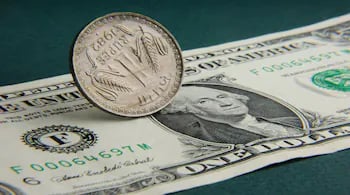Add your promotional text...
Indian Rupee Hits Record Low of ₹85.12 Against US Dollar: What’s Driving the Slide?
Synopsis: The Indian rupee plummeted to a historic low of ₹85.12 against the US dollar, driven by hawkish signals from the US Federal Reserve and a stronger dollar index. The global and domestic economic landscape, alongside stock market turbulence, amplified the rupee's decline.
FOREX
By Sonal Chauhan
12/19/20243 min read


Historic Fall of the Indian Rupee: A Deep Dive
The Indian rupee has faced substantial pressure, hitting an all-time low of ₹85.12 against the US dollar on the National Stock Exchange (NSE). This sharp depreciation is a direct consequence of the US Federal Reserve's hawkish stance during its recent meeting, which shifted focus to maintaining employment and price stability while cutting back on projected rate reductions for 2025.
Key Drivers Behind the Rupee’s Decline
Hawkish Fed Commentary
The Federal Open Market Committee (FOMC) halved its expected rate cuts for 2025, leading to a stronger dollar.
The dollar index surged past the 108 level, creating a ripple effect across global currencies, including the rupee.
Weak Domestic Market Sentiment
Domestic stock markets displayed a soft trend, with major indices dropping significantly.
Demand for the US dollar from importers and foreign capital outflows further weakened the rupee.
Global Market Dynamics
The US 10-year bond yield rose to 4.52%, which is seen as a negative signal for Foreign Institutional Investor (FII) fund inflows into emerging markets like India.
The Dow Jones, S&P 500, and Nasdaq recorded substantial declines following the Fed’s decision.
How Global Markets Reacted
Post-Fed meeting, global equities experienced a sharp sell-off:
Dow Jones: Dropped 2.58%, closing at 42,326.87.
S&P 500: Declined 2.95%, closing at 5,872.20.
Nasdaq: Fell 3.56%, closing at 19,392.69.
The rally in the dollar and concerns over slower rate cuts further contributed to the turbulence in financial markets worldwide.
FII and DII Activity in India
Foreign institutional investors (FIIs) offloaded equities worth ₹1,316.81 crore in Indian markets on December 18, reflecting a risk-off sentiment. In contrast, domestic institutional investors (DIIs) stepped in, purchasing equities worth ₹4,084.08 crore, partially mitigating the market impact.
Impact on Indian Stock Markets
Indian equities opened weak on Thursday, reflecting the rupee’s fall and global market instability:
Sensex: Fell 881.51 points (1.10%) to trade at 79,300.6 around 1:14 PM.
Nifty: Dropped 232.70 points (0.96%) to trade at 23,966.15.
The decline indicates a broader concern over foreign capital outflows and subdued investor confidence in the wake of a stronger dollar.
Economic Indicators to Watch
Experts have identified key indicators that may influence the rupee and broader financial markets:
Dollar Index and Bond Yields:
The dollar index's rise above 108 and bond yields hitting 4.52% are signals of a strengthening US economy, likely to impact FII flows negatively.
Import-Driven Demand for Dollars:
Continued dollar demand from importers is putting additional pressure on the rupee.
Global Sentiments:
Any further hawkish commentary or economic data releases from the US could exacerbate volatility in emerging markets.
What Experts Say
Market analysts remain cautiously optimistic despite the rupee’s record low:
“The current pressure on the rupee and the equity markets is likely temporary,” said one expert.
The surge in the dollar index and bond yields are seen as short-term headwinds, with expectations that the rupee may stabilize as global economic conditions evolve.
Looking Ahead: A Path to Stability?
While the Indian rupee's recent performance reflects broader global economic challenges, policymakers and investors are eyeing key measures to counteract the downward trend:
Domestic Policy Adjustments: Efforts to attract foreign investments and boost exports may provide relief.
Global Economic Shifts: Any signs of easing inflation or improved economic conditions in the US could soften the dollar, offering respite to emerging market currencies.
In conclusion, The rupee’s fall to a record low of ₹85.12 highlights the interconnectedness of global and domestic financial systems. While the current phase poses challenges, strategic interventions and a potential stabilization in global markets could pave the way for recovery.
India’s resilience will depend on its ability to balance external pressures with domestic economic policies, ensuring that the rupee regains its footing in the months to come.
